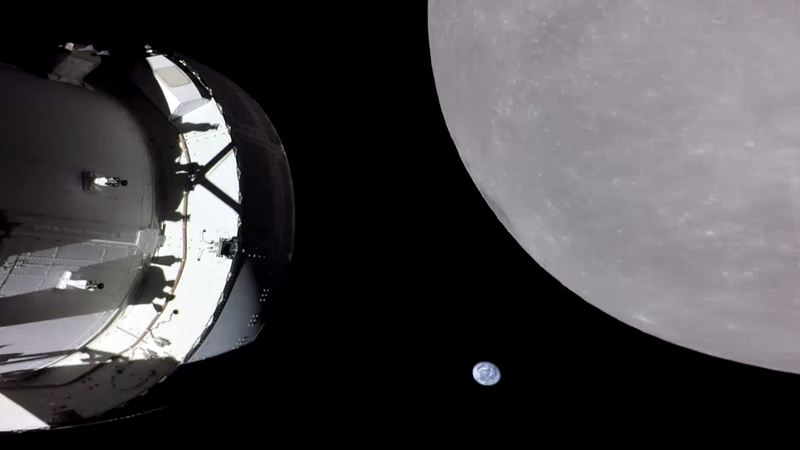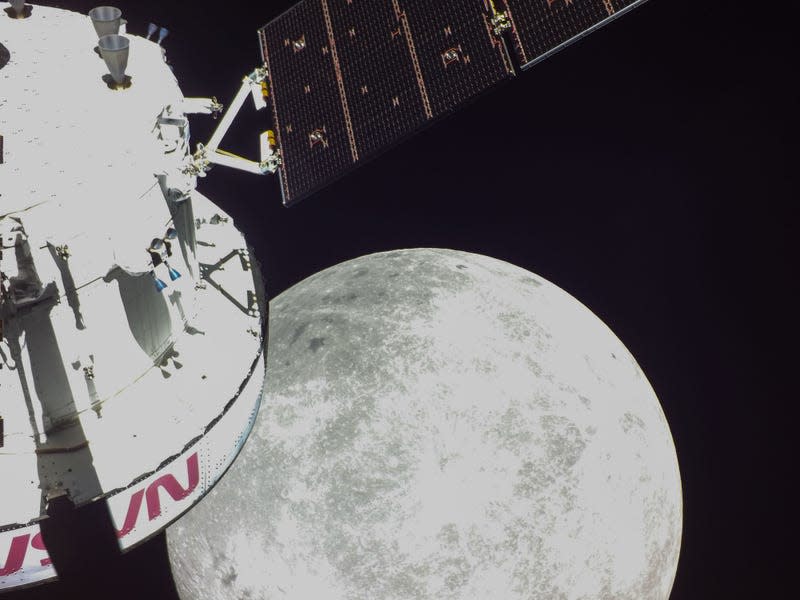Artemis I Passes 81 Miles Above Moon's Surface Before Heading for Record-Breaking Distance from Earth

Much like the James Webb Space Telescope, it took scientists and engineers years and multiple launch attempts to get the Artemis I SLS rocket and its Orion spacecraft up in the air. After four launch attempts over two months, the most powerful rocket ever built by NASA successfully launched just last week. Good things are now coming to those who waited: The mission is going swimmingly, and soon the spacecraft will be farther from Earth than any other vehicle meant to carry human beings has ever reached.
On Monday, Orion passed just 81 miles above the Moon’s surface while traveling at 2,128 mph. So close, yet so far away. A burn pushed that speed up to 5,102 mph as the spacecraft made its way over the previous landing sites of Apollo 11, 12 and 14, according to NASA. Here are a few more facts and figures to completely blow your mind:
Read more
Orion will travel about 57,287 miles beyond the Moon at its farthest point from the Moon on Nov. 25, pass the record set by Apollo 13 for the farthest distance traveled by a spacecraft designed for humans at 248,655 miles from Earth on Saturday, Nov. 26, and reach its maximum distance from Earth of 268,552 miles Monday, Nov. 28.
As of Monday, Nov. 21, a total of 3,715.7 pounds of propellant has been used, 76.2 pounds less than prelaunch expected values. There are 2,112.2 pounds of margin available over what is planned for use during the mission, an increase of 201.7 pounds from prelaunch expected values.
Just after 2:45 p.m. CST on Nov. 21, Orion had traveled 216,842 miles from Earth and was 13,444 miles from the Moon, cruising at 3,489 miles per hour.
The Artemis I mission is the unmanned first step back to the moon for the U.S. It’ll spend about 25 days doing a few loops around the moon before returning to Earth. The Orion spacecraft and new spacesuits onboard will be pushed to the very limits while over a quarter of a million miles away from Earth. The next step, Artemis II, is slated from sometime in 2025 and will involve a four-person crewed flight around the moon and will take human beings the farthest into space ever. By 2026, we could have boots on the as yet unexplored lunar South Pole.


 Yahoo Autos
Yahoo Autos 